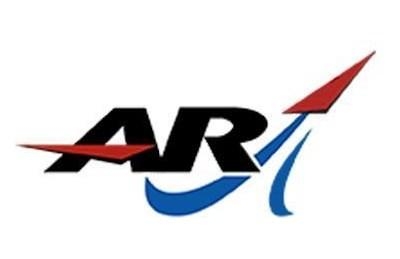Wed, Jun 26, 2019
Green Propellant Infusion Mission (GPIM) Will Demonstrate In Space For The First Time A New Non-Toxic Propellant
Aerojet Rocketdyne, along with NASA, Ball Aerospace and the Air Force Research Laboratory (AFRL), is helping usher in a new era of small satellite propulsion through the Green Propellant Infusion Mission (GPIM). On June 24, a Ball Aerospace small satellite was launched from NASA’s Kennedy Space Center in Cape Canaveral, Florida. The spacecraft will conduct a 13-month demonstration of a revolutionary “green” propellant developed by the AFRL, called AF-M315E.

Powered by this green propellant, Aerojet Rocketdyne’s green propellant propulsion system will enable the spacecraft to execute and demonstrate orbital maneuvers in space. The system includes five 1-newton thrusters: four for attitude control and one for orbit maneuvering. This will be the first space-based demonstration of Aerojet Rocketdyne’s green propulsion technology utilizing AF-M315E propellant.
“Aerojet Rocketdyne has provided trusted and reliable in-space propulsion to industry, government and commercial partners since the beginning of the space age,” said Eileen Drake, CEO and president of Aerojet Rocketdyne. “We’re excited to expand upon this legacy with our new green propulsion technology, which will enable increased satellite performance and provide propulsion options to SmallSats that previously weren’t available.”
AF-M315E is a higher performance and environmentally-friendly alternative for chemical propulsion operations that traditionally use hydrazine. Because of its increased density and higher performance, satellites can achieve extended operation timelines and increased maneuverability. Its lower freezing point eliminates the need for added onboard heating systems, resulting in a greater mass allowance for added life. Green propellant is also non-toxic, which enables safe handling of the propellant and simplifies pre-launch processing.
NASA is interested in using green propellant for various next-generation spacecraft and launch vehicles to the Moon, Mars and beyond. Proving this new technology is effective and efficient in space will open the door for green propulsion to become a viable option for future missions. Aerojet Rocketdyne’s green propellant propulsion system was developed at the company’s Redmond, Washington, facility.
(Source: Aerojet Rocketdyne news release)
More News
Also: Vertical Flight Society, NBAA Maintenance Conference, GA Honored, AMT Scholarship For the first time, students from Embry-Riddle’s Daytona Beach, Florida, campus took t>[...]
Hazardous Weather Information Summary of significant meteorological information (SIGMET/WS), convective significant meteorological information (convective SIGMET/WST), urgent pilot>[...]
"The need for innovation at speed and scale is greater than ever. The X-62A VISTA is a crucial platform in our efforts to develop, test and integrate AI, as well as to establish AI>[...]
(FAA) Inspector Observed That Both Fuel Tanks Were Intact And That Only A Minimal Amount Of Fuel Remained In Each Analysis: According to the pilot, approximately 8 miles from the d>[...]
“Pyka’s Pelican Cargo is unlike any other UAS solution on the market for contested logistics. We assessed a number of leading capabilities and concluded that the Pelica>[...]
 Airborne-Flight Training 05.09.24: ERAU at AIAA, LIFT Diamond Buy, Epic A&P
Airborne-Flight Training 05.09.24: ERAU at AIAA, LIFT Diamond Buy, Epic A&P ANN's Daily Aero-Term (05.07.24): Hazardous Weather Information
ANN's Daily Aero-Term (05.07.24): Hazardous Weather Information Aero-News: Quote of the Day (05.07.24)
Aero-News: Quote of the Day (05.07.24) NTSB Final Report: Cessna 150
NTSB Final Report: Cessna 150 Aero-News: Quote of the Day (05.08.24)
Aero-News: Quote of the Day (05.08.24)



